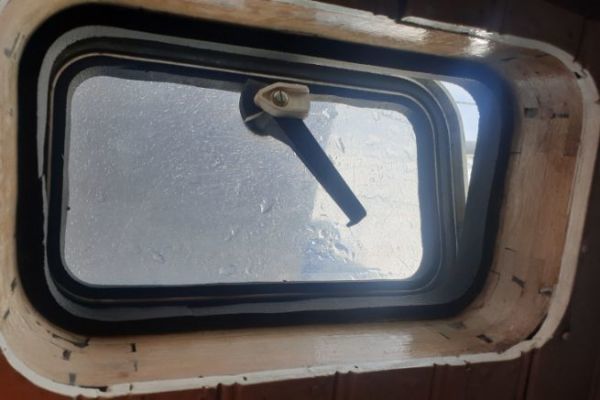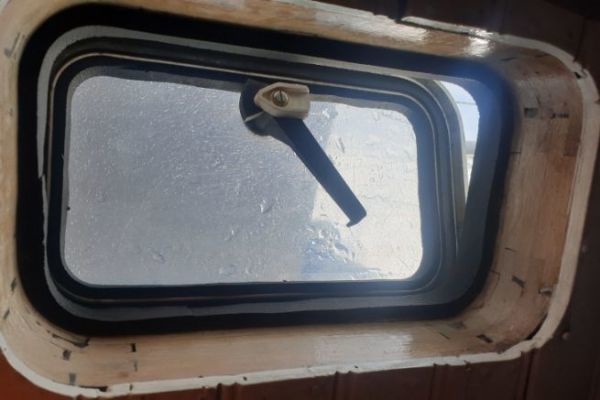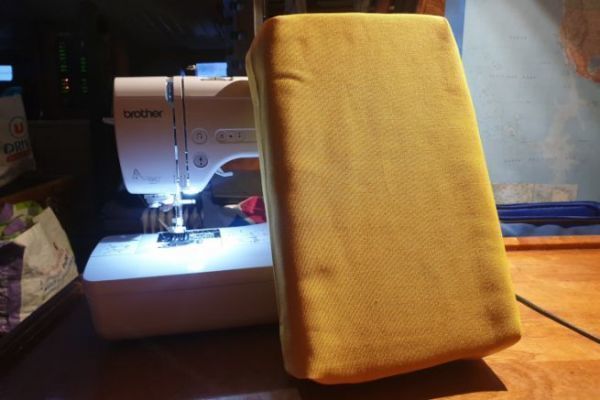In a boat, even if it is very well insulated, there are always some thermal bridges that concentrate condensation when it is cold. This is especially the case for the aluminum porthole towers that weep as soon as the temperature drops a little.
Reduce the humidity level inside
The best way to avoid or limit condensation is to lower the humidity level inside the boat. To do this, you can use dehumidifiers and, above all, ventilate sufficiently.
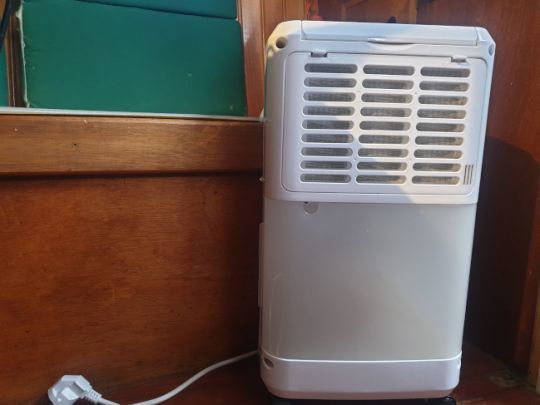
Heating the air of the boat
One reason condensation forms is that cold air has a lower water concentration than warm air. Heating the air will limit condensation as long as the humidity level does not exceed a certain threshold. It is therefore important to ensure that the air is well ventilated, even when the heating is turned on.
However, it is difficult, not very ecological and often forbidden to heat your boat when it is in winter without anyone on board.
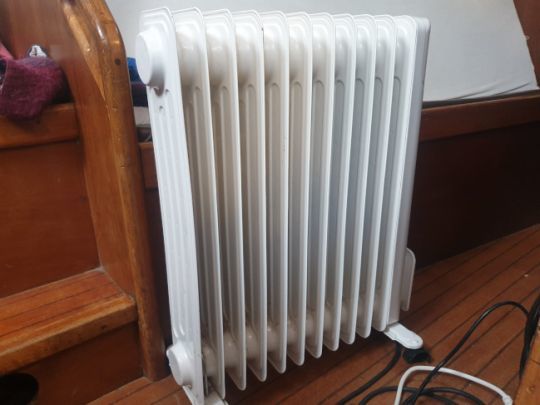
Insulate surfaces prone to condensation
Some surfaces encourage condensation. This is particularly true of metal and glass surfaces. Portholes are often champions of condensation! The best way to remedy this is double glazing. However, the installation of double glazing in a boat is not an easy task and therefore cannot always be done. However, there are other effective and economical tips.
Insulate the window surrounds
No one will deny it, condensation in a boat is particularly unpleasant when you get drops of frozen water on your head while sitting under a porthole. To avoid this phenomenon, you can insulate the perimeter of the porthole with self-adhesive insulating foam. We explain how to do it.
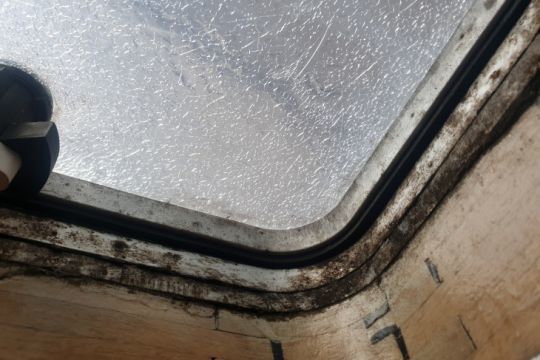
Clean
The first thing to do is to carefully clean the mold that develops due to condensation. We use soapy water with Marseille soap for example, then a cloth soaked in methylated spirits.
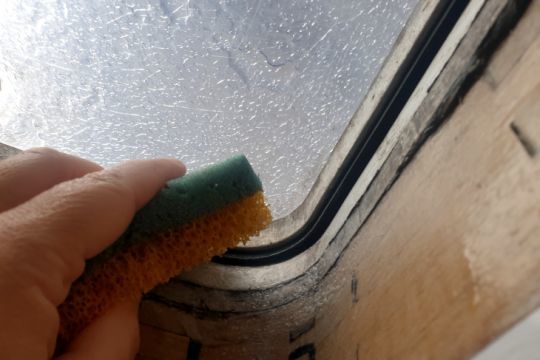
Cutting the insulation
Next, the height of the metal lathe to be covered with the foam is measured.
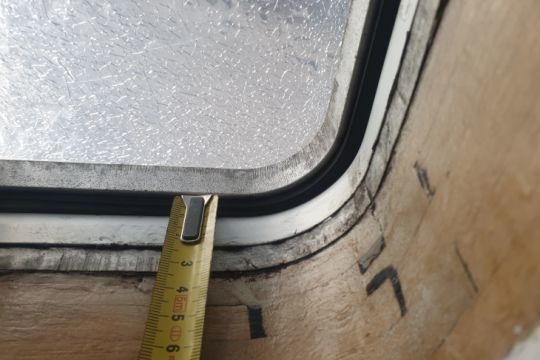
Here, a strip of 3 cm width for the shell part of the window and a strip of 1.5 cm for the opening part of the window.
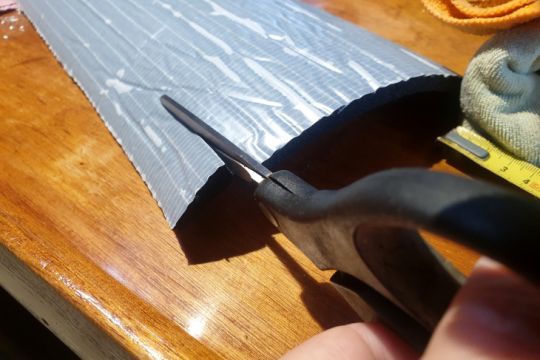
With scissors, cut strips of self-adhesive insulating foam. The foam can be purchased in pre-cut strips at a higher price. This may not be a good idea, as several heights of tape are required for different sized windows.
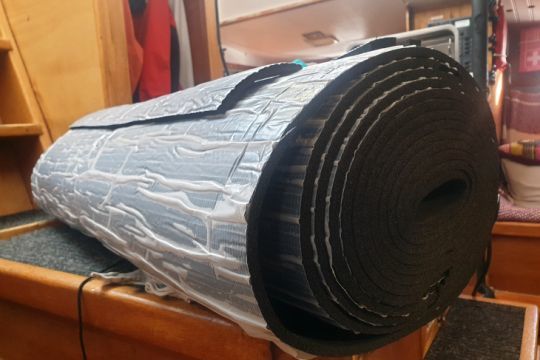
You can also find foam without a self-adhesive coating and glue it yourself. After testing both methods, the self-adhesive foam saves a considerable amount of time and is very comfortable to stand on.
Gluing the insulation
Then we will glue the foam on the perimeter of the window after having made sure that the surface is dry.
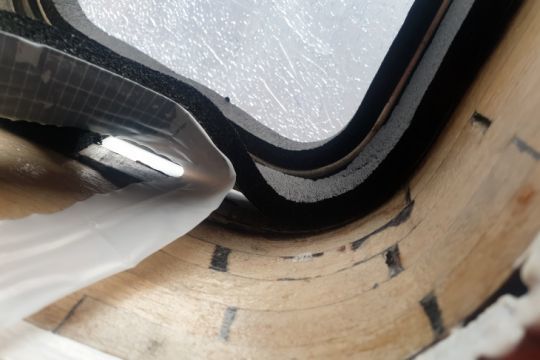
This solution, fast and economic, allows to fight effectively against condensation at the level of the portholes. However, it does not fight against the cause of condensation, the humidity in the air, and its defect is to slightly reduce the brightness of the windows.
The foam, in itself, adheres well, but remains rather fragile to friction. It is therefore advisable to handle it with care and not to touch it once it has been applied. Like all adhesives, the removal of the foam leaves traces of glue that must be carefully cleaned if necessary.

